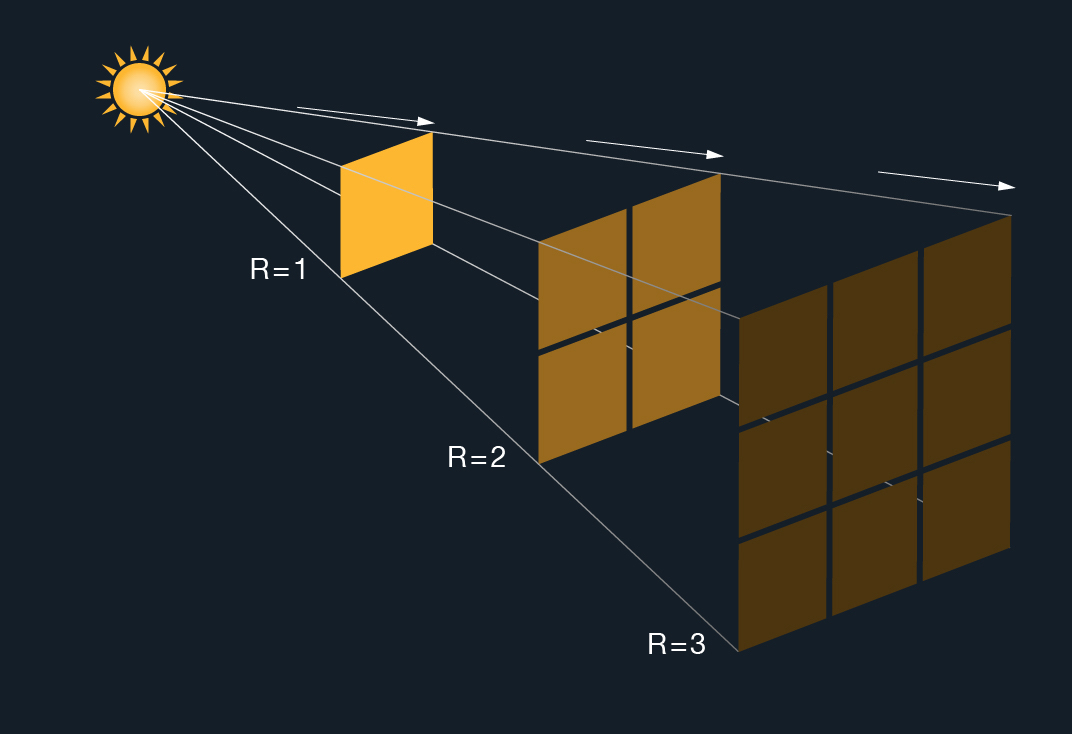Chapter 6: Electromagnetics
Chapter Objectives
Upon completion of this chapter you will be able to describe in general terms characteristics of natural and artificial emitters of radiation. You will be able to describe bands of the spectrum from RF to gamma rays, and the particular usefulness radio frequencies have for deep-space communication. You will be able to describe the basic principles of spectroscopy, Doppler effect, reflection and refraction.

Electromagnetic Radiation
Electromagnetic radiation (radio waves, light, etc.) consists of interacting, self-sustaining electric and magnetic fields that propagate through empty space at 299,792 km per second (the speed of light, c), and slightly slower through air and other media. Thermonuclear reactions in the cores of stars (including the Sun) provide the energy that eventually leaves stars, primarily in the form of electromagnetic radiation. These waves cover a wide spectrum of frequencies. Sunshine is a familiar example of electromagnetic radiation that is naturally emitted by the Sun. Starlight is the same thing from "Suns" much farther away.
When a direct current (DC) of electricity, for example from a flashlight battery, is applied to a wire or other conductor, the current flow builds an electromagnetic field around the wire, propagating a wave outward. When the current is removed the field collapses, again propagating a wave. If the current is applied and removed repeatedly over a period of time, or if the electrical current is made to alternate its polarity with a uniform period of time, a series of waves is propagated at a discrete frequency. This phenomenon is the basis of electromagnetic radiation.
Electromagnetic radiation normally propagates in straight lines at the speed of light and does not require a medium for transmission. It slows as it passes through a medium such as air, water, glass, etc.
The Inverse Square Law
Electromagnetic energy decreases as if it were dispersed over the area on an expanding sphere, expressed as 4pR2 where radius R is the distance the energy has travelled. The amount of energy received at a point on that sphere diminishes as 1/R2. This relationship is known as the inverse-square law of (electromagnetic) propagation. It accounts for loss of signal strength over space, called space loss.
The inverse-square law is significant to the exploration of the universe, because it means that the concentration of electromagnetic radiation decreases very rapidly with increasing distance from the emitter. Whether the emitter is a distant spacecraft with a low-power transmitter or an extremely powerful star, it will deliver only a small amount of electromagnetic energy to a detector on Earth because of the very great distances and the small area that Earth subtends on the huge imaginary sphere.





